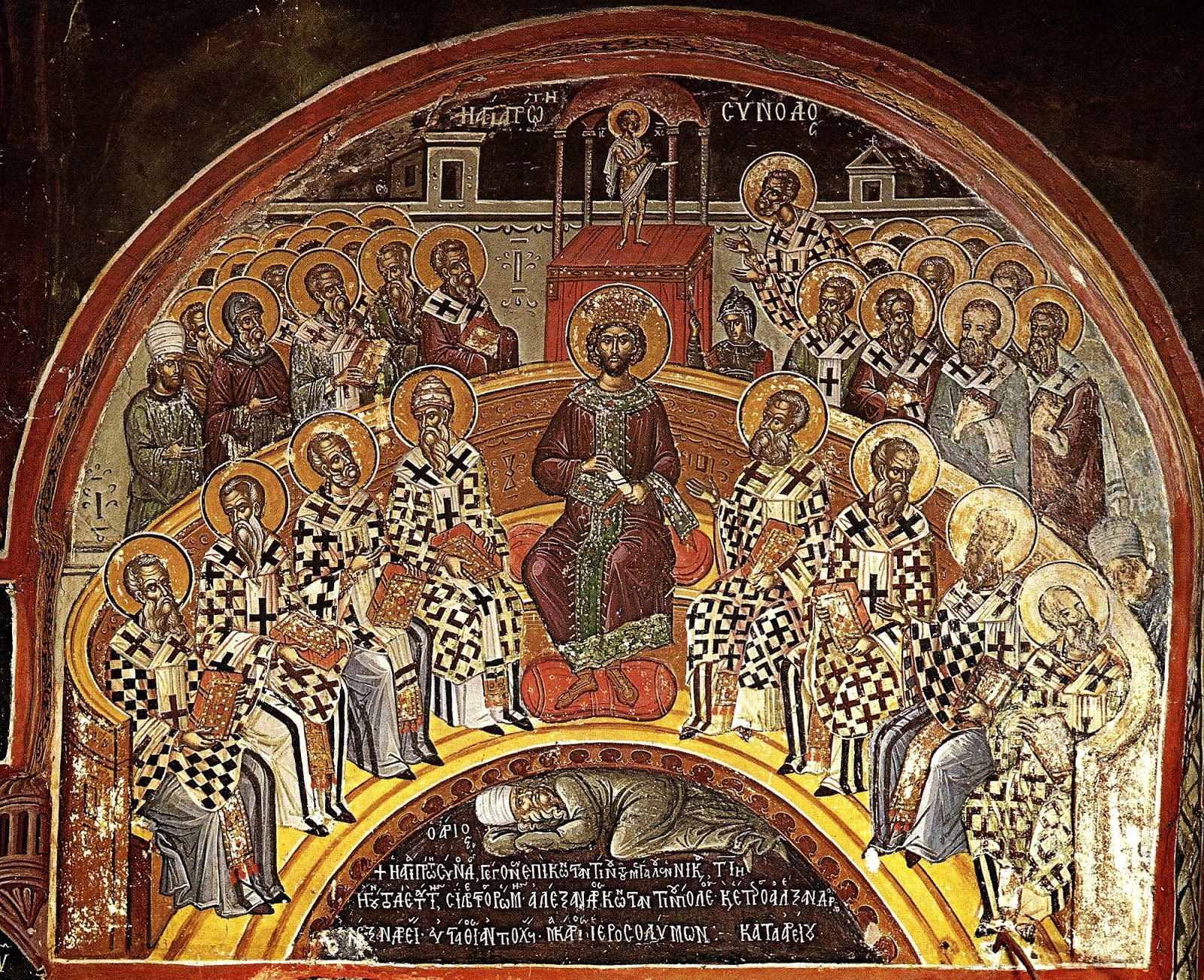Unlocking the Secrets of Nicaea: Where the First Ecumenical Council Met
Ever wonder where the foundations of Christian doctrine were laid? Imagine a gathering of bishops from across the Roman Empire, debating fiercely over the very nature of God. This wasn't a scene from a fantasy novel, but a real historical event: the First Ecumenical Council, held in Nicaea in 325 AD. This pivotal meeting shaped the course of Christianity, and understanding its location, Nicaea, is key to grasping its significance.
The location of the First Ecumenical Council, Nicaea (present-day İznik, Turkey), wasn't chosen randomly. Its proximity to Constantinople, the imperial capital, made it easily accessible for Emperor Constantine, who convened the council. This strategic location facilitated the gathering of bishops from different regions, allowing for a comprehensive discussion of pressing theological issues. The city's infrastructure also played a role, offering suitable venues for the council's deliberations.
Understanding the historical context of the First Ecumenical Council's location is essential. Nicaea was a thriving city in the 4th century, a hub of intellectual and religious activity. Its selection as the council's meeting place underscores the city's importance within the Roman Empire. The council's proceedings, held within the walls of Nicaea, resonated far beyond the city's limits, impacting the entire Christian world. The council aimed to address the Arian controversy, a theological dispute that threatened the unity of the early Church.
The Arian controversy, the primary issue addressed at the council held in Nicaea, revolved around the nature of Jesus Christ. Arius, a presbyter from Alexandria, argued that Jesus was a created being, subordinate to God the Father. This view contradicted the belief in the divinity of Christ, a cornerstone of Christian theology. The council at Nicaea aimed to resolve this dispute and establish a unified understanding of Christ's nature. The Nicene Creed, formulated during the council held at Nicaea, affirmed the consubstantiality of the Father and the Son, solidifying the doctrine of the Trinity.
The impact of the First Ecumenical Council's location extends beyond its immediate historical context. Nicaea, as the setting of this pivotal event, became a symbol of unity and doctrinal clarity within Christianity. The Nicene Creed, a product of the council at Nicaea, remains a central element of Christian liturgy and a testament to the council's enduring legacy. The location of the First Ecumenical Council continues to hold symbolic significance for Christians worldwide, representing a landmark moment in the development of Christian theology.
The importance of the First Ecumenical Council lies in its establishment of core Christian doctrines, particularly the Trinity. The Nicene Creed, a product of this gathering, remains a cornerstone of Christian belief. The Council's decisions at Nicaea profoundly shaped the trajectory of Christian theology and continue to influence Christian thought and practice today.
One benefit of understanding the council's location is a deeper appreciation for the historical context surrounding these critical decisions. Knowing the logistical and political realities of Nicaea sheds light on the challenges and triumphs of the council.
Another benefit is the ability to connect with the past. Visiting İznik today provides a tangible link to this pivotal moment in Christian history. Seeing the remnants of ancient Nicaea helps bring the story of the First Ecumenical Council to life.
A third benefit is gaining a richer understanding of the evolution of Christian doctrine. The council at Nicaea marked a decisive moment in the development of Christian thought, and studying its location can further enhance our comprehension of this process.
Advantages and Disadvantages of Nicaea as the Council Location
| Advantages | Disadvantages |
|---|---|
| Proximity to Constantinople | Potential for Imperial Influence |
| Existing Infrastructure | Distance for some bishops |
FAQ:
1. Where was the First Ecumenical Council held? Answer: Nicaea (present-day İznik, Turkey).
2. When was the First Ecumenical Council held? Answer: 325 AD.
3. Who convened the First Ecumenical Council? Answer: Emperor Constantine.
4. What was the main issue addressed at the First Ecumenical Council? Answer: The Arian controversy.
5. What was the outcome of the First Ecumenical Council? Answer: The Nicene Creed.
6. Why was Nicaea chosen as the location for the council? Answer: Proximity to Constantinople and suitable infrastructure.
7. What is the significance of the Nicene Creed? Answer: It defines core Christian doctrines, including the Trinity.
8. What is the modern-day name of Nicaea? Answer: İznik.
The First Ecumenical Council, held in Nicaea, was a pivotal moment in Christian history. Its location played a crucial role in the council’s proceedings and its lasting impact. Understanding the context of the location, the historical significance, and the enduring legacy of the council held in Nicaea provides valuable insight into the development of Christian theology. By exploring the site of the First Ecumenical Council, we can gain a deeper appreciation for the foundations of Christian belief and the challenges faced by the early Church. This knowledge enriches our understanding of the Christian faith and its evolution through time. Explore the rich history of the First Ecumenical Council's location and deepen your understanding of this pivotal event.
Toyota rav4 size comparison finding the perfect fit
Exploring the fantasy eroge abilities and real world parallels
Transform your space with sherwin williams teal paint













